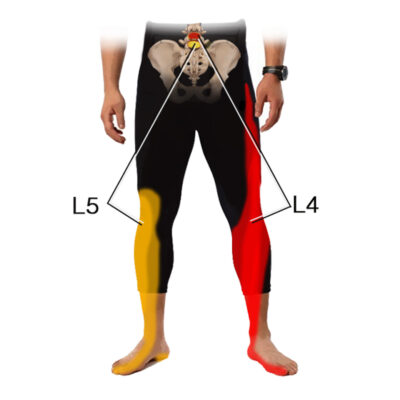In some places in the body, the pain is not felt where the injury is. This is called Referred Pain. It means the injury is in one place, and the pain is somewhere else.
It’s important to understand this phenomenon. A neck injury might only hurt in the upper back. A shoulder injury might only hurt in the lower arm. And a lower back injury might just hurt in the leg and not in the back at all. Understanding what’s going on can be difficult unless you understand referred pain.
The only places that refer pain are the:
- Shoulders
- Neck
- Midback
- Lower back
- Hip joints
The areas of the body that don’t refer pain are the
- Elbows
- Forearms
- Wrists
- Hands
- Thighs
- Knees
- Lower Legs
- Feet
For example, a pain in your foot is probably from an injury in your foot, but the back can also refer pain to the foot. If you move your foot and it hurts, the injury is likely in the foot. If you move your back and your foot hurts, the injury is likely in the back. What’s happening is that your back injury is referring pain to your foot.
There are a few guidelines for how referred pain works.
Referred pain always travels from the center of your body to the periphery. So, an injury to the left side of your neck will refer pain down the left arm toward the hand but not from the hand toward the neck.
Referred pain doesn’t cross the midline of the body. So, if you have an injury in your left shoulder, it will refer pain down the left arm toward the wrist. It never refers pain down the right arm. However, if you injure your left shoulder, you might try not to use it and will overuse your right shoulder, causing a new injury in the right shoulder. That’s not a referred pain; those are two separate injuries.
The final guideline is that the more severe the injury, the farther the pain travels. For example, a mild shoulder injury might hurt just a few inches down the arm, a moderate injury would be painful to the elbow, and a severe injury might be painful all the way down to the wrist.





